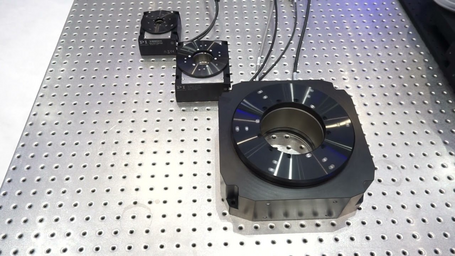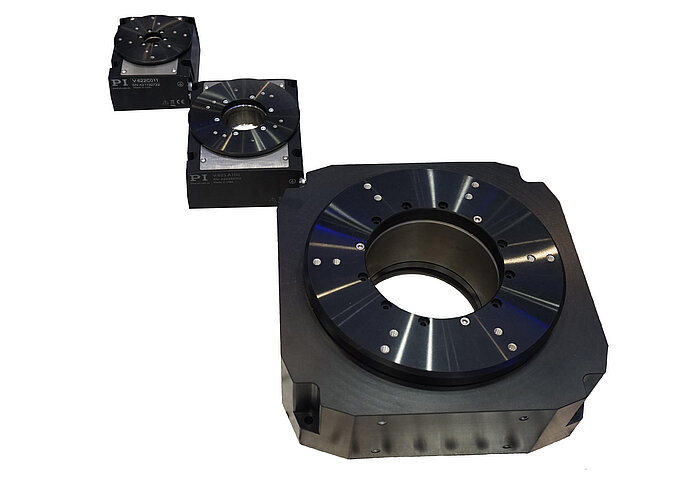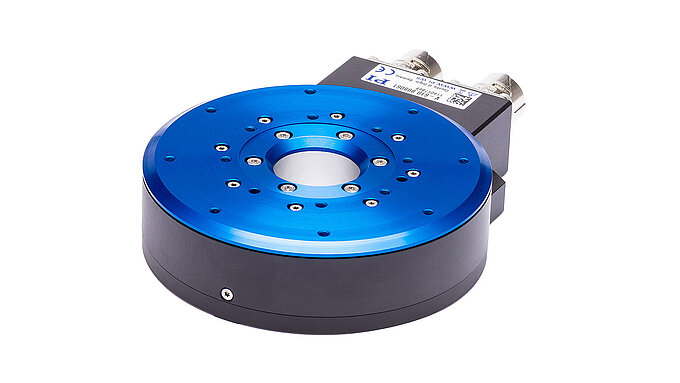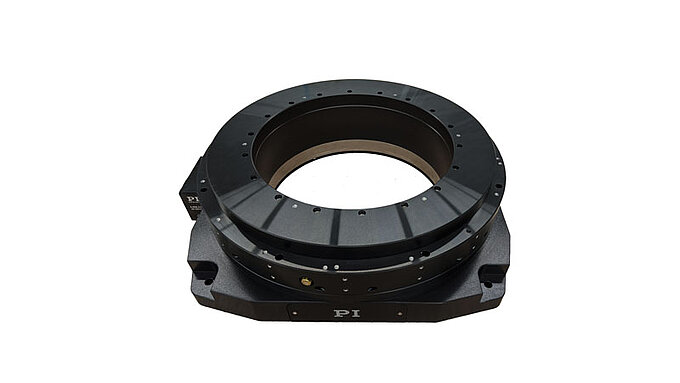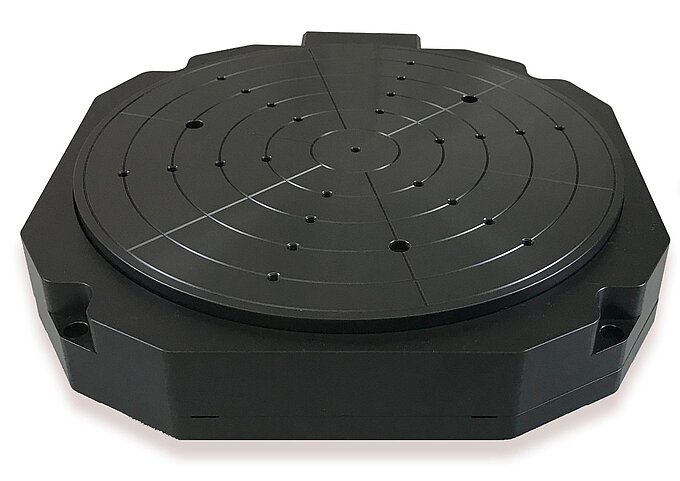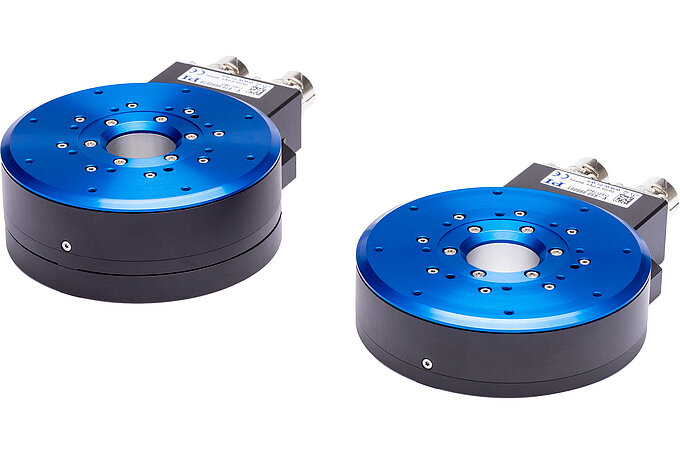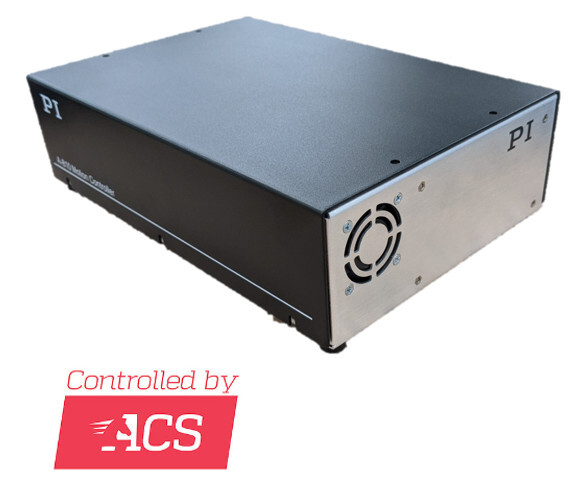Products - PI (Physik Instrumente) L.P.
US-Made High Precision Motorized Rotation Stages with Ball Bearings and Direct-Drive Torque Motors

PI recently introduced a new family of direct-drive, ball bearing rotation stages supplementing the ultra-high precision A-621 – A-627 family of direct-drive air bearing spindles. The new ball bearing rotary stage family is currently offered with two platform diameters (V-622, V-623), and a larger stage (V-625) will be available in the near future. The new rotation stages are designed for demanding 24/7 applications that require high precision motion with eccentricity and flatness deviations below 1µm and along with high stiffness.
Focus on Higher Guiding Precision and Maintenance Free Operation
Based on PI’s extensive design and manufacturing knowledge with ultra-high-precision air bearing rotary spindles, the new V-622 and V-623 mechanical bearing rotary stages provide exceptional performance regarding travel accuracy, flatness, and wobble. The ultra-precise deep groove ball bearings are preloaded and lubricated prior to delivery, meaning they are maintenance-free for the lifetime of the rotation stage.
Operation in Any Orientation
The new rotary stage family can be mounted and operated in any orientation, horizontal, vertical, and hanging, a critical feature for many industrial automation applications.
Direct-Drive Torque Motor – Friction-Free and Maintenance Free
For fast acceleration and a wide dynamic range, the V-622 and V-623 direct-drive rotation stages are equipped with three-phase torque motors, transmitting torque directly and friction-free to the motion platform. Advantages of a direct-drive design over a worm-gear drive are higher velocity and acceleration, faster response, as well as the total lack of backlash, friction, and wear in the drive train.
Incremental and Absolute Measuring Encoder Options
Absolute encoders supply explicit position information that enables the direct determination of each angular position – a great advantage over the traditional way of starting at a home position and continuous counting of encoder output increments. Therefore, position information is immediately available after power up without referencing, improving both efficiency and safety during operation.
Motion Controllers
Single-axis and multi-axis, ACS-based motion controllers and servo drives are available to power and control the new rotary stages in single-axis or multi-axis, multi-degree-of-freedom sub-assemblies — also available from PI.
Application Fields
Optics and Photonics, Sample Inspection, Metrology, Semiconductor Testing & Inspection, Industrial Automation, Measuring Technology, Precision Micro-Assembly, Biotechnology
Why Use High-Performance Direct-Drive Rotary Stages / Spindles
High precision ball bearing rotary stages (rotary spindles) are critical components in a wide range of industrial and scientific applications. These stages are designed to rotate objects, from machined parts to high precision optics, with high resolution, speed and accuracy, providing operators with the ability to precisely control the angular position and orientation of their samples or equipment.
The basic design of a direct-drive rotary spindle consists of a circular platform, driven by an integrated, non-contact torque motor. The platform is supported by a series of ball bearings. The secret to a smooth, uniform, and low-friction operation lies in the consistency of the balls and the precision of the raceways.
The ball bearings used in high precision rotary stages must be made from high-quality materials to ensure maximum durability and reliability. They are precision machined to exacting tolerances, ensuring that they are perfectly spherical and that they provide a smooth and even rotation.
One of the key requirements for high precision rotary spindles is exceptional accuracy, with minimum wobble, eccentricity, single digit microradian bidirectional angular repeatability, and sensor resolution of better than 0.01µrad. This level of accuracy is critical in a wide range of scientific and industrial applications, such as optics, laser processing, metrology, and semiconductor manufacturing.
More US-manufactured precision positioning linear stages and XY stages
» V-781 High Precision XY stages
» V-574 Linear Motor Stage with Excellent Guiding Precision
» 6 Families of US-Manufactured Linear Stages and Rotary Stages
